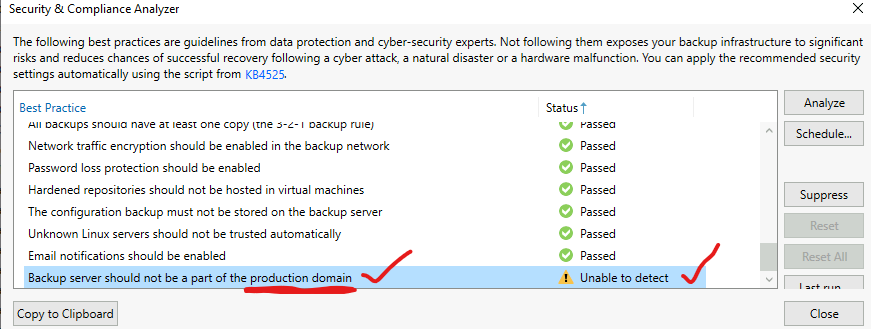Hi Community,
VBR server should not be part of the production domain—Unable to detect whether it should be considered important or not. How can we fix this? Is my VBR already in the production domain, or should I put it back on the workgroup?

Hi Community,
VBR server should not be part of the production domain—Unable to detect whether it should be considered important or not. How can we fix this? Is my VBR already in the production domain, or should I put it back on the workgroup?

Best answer by kristofpoppe
It shouldn’t be part of the production domain. For smaller environments you can use a workgroup membership, otherwise a dedicated backup domain can be set-up, but this involves additional DC’s if you want to do it properly. Changing the domain membership can have some impact on database connections (eg. external SQL) also verify the setup of surebackup jobs and all other accounts involved in testing and application awareness.
Enter your E-mail address. We'll send you an e-mail with instructions to reset your password.